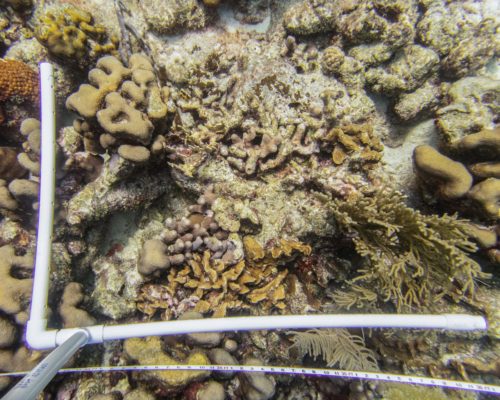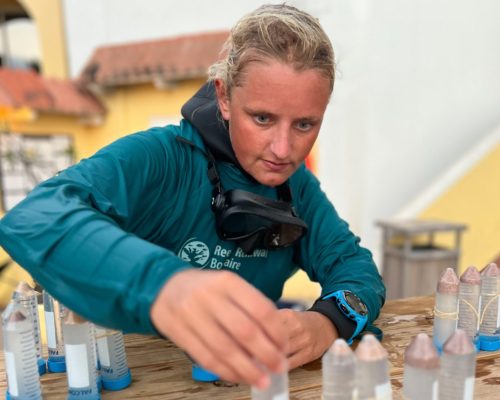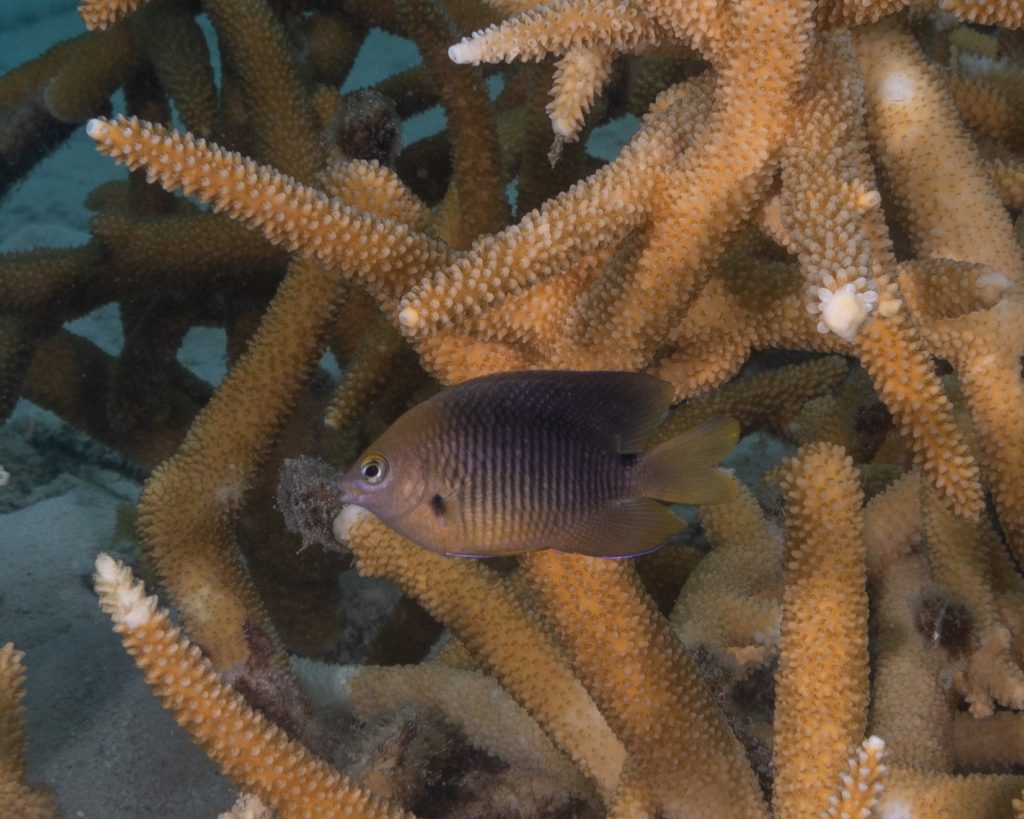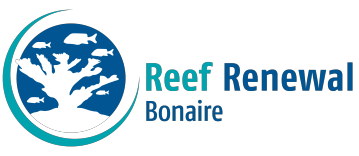Tracking Coral Performance to Tailor our
Restoration Approach
In our comprehensive approach to coral restoration, monitoring stands as a cornerstone – supplying essential data that guides our work. We combine a variety of monitoring techniques to gain valuable insight into coral performance before and after outplanting, and assess our overall progress towards restoration goals.

Single Colony Surveys
We regularly conduct in-water surveys in our nurseries to gather timely feedback on coral performance, enabling us to make immediate and necessary adjustments to our restoration plan. Monitoring involves tracking coral growth at different sites, to promptly identify potential stressors affecting overall health.
While monitoring nurseries provides us with valuable information on coral production, data collection at outplanting sites is crucial to evaluating the ultimate success of our restoration efforts. We gather data on metrics such as coral live tissue, disease prevalence, predation, and, once corals reach maturity, occurrence of natural spawning.
Monitoring activities are intensified during natural stress events (e.g., post storms, bleaching) or accidents (e.g., boat grounding). By closely observing the performance of different species and genetic strains under stressful conditions, we can identify corals that exhibit greater resilience in their increasingly evolving environment. This information is instrumental in prioritizing the propagation of selected species or strains based on the conditions expected at reef area.

Photogrammetry and Large-scale Imagery Analysis
A photomosaic is a high-resolution image created by stitching together hundreds or thousands of individual pictures. Since 2018, we have been creating and analyzing photomosaics of our restoration sites, covering areas as large as 3,000m2. This approach helps us better understand how outplanted coral patches expand and contract over time.
Beyond assessing restoration success, large-scale photomosaics provide a historical perspective on the reef’s status, establishing a crucial reference point for future assessments and actions. This innovative method not only enhances our monitoring capabilities but also contributes valuable insights for the ongoing preservation and restoration of coral reefs.
Explore a Photomosaic
Carl’s Hill is one of our earliest restoration sites off the coast of Klein Bonaire. We’ve outplanted over 2,000 elkhorn corals (Acropora palmata) here since 2012, many of which have been observed spawning in recent years. This photomosaic, created using thousands of photos taken during a swim-over of this site, covers a region of approximately 1000 square meters.
Use the box below to scroll, zoom, and pan through Carl’s Hill:
Assessing Ecosystem-Wide Restoration
In order to understand the long-term ecological impact of our work and evaluate the ultimate success of reef restoration, we adhere to international standards by adopting the monitoring protocol established by the Global Coral Reef Monitoring Network (GCRMN). This protocol allows us to assess the influence of our restoration efforts on the entire coral reef ecosystem.
By monitoring key indicators of reef health such as fish diversity and abundance, coral recruits, presence of herbivores or algae cover, we gauge the broader impact of our activities on the ecosystem as a whole. Sharing our data with the GCRMN network not only sheds light on our ecological footprint in Bonaire, but also contributes to a comprehensive understanding of the status of Caribbean coral reefs.



Tracking Assisted Reproduction
In our ongoing efforts to advance coral restoration techniques, we monitor each stage of our larval propagation and assisted settlement program, collecting key metrics such as fertilization success, settlement rate, and long-term survival of corals post-outplanting. This detailed monitoring allows us to gain critical insights into the various stages of the reproduction process, enabling us to identify and address potential bottlenecks.
Given the substantial quantities of gametes produced during each spawning event, we recognize the potential to greatly scale up the number of recruits we introduce to the reef. This underscores our commitment to advancing assisted coral reproduction as a viable strategy for bolstering coral populations and promoting the long-term health of coral ecosystems.

